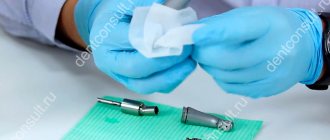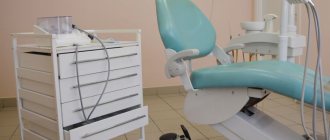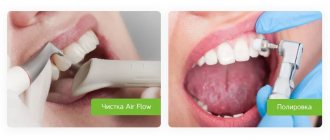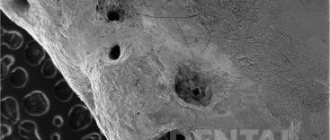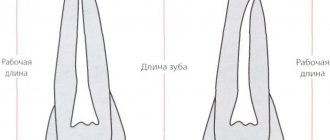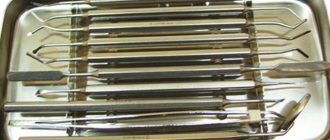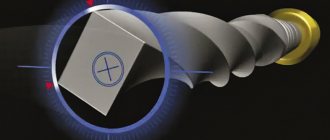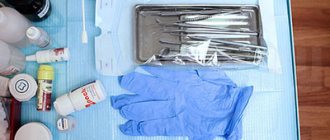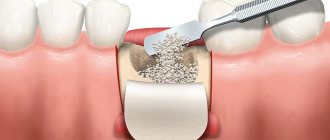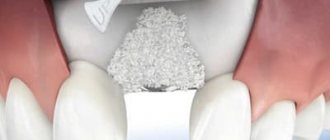Sterilization is the process of complete disinfection of instruments, during which all microorganisms, as well as their spores, are killed.
Everything that comes into contact with the patient’s biological fluids and is used repeatedly is subject to sterilization. Human immunodeficiency virus, hepatitis B and C, malaria, typhus – this is an incomplete list of diseases that are transmitted through blood. Sterilization is necessary to prevent their spread.
At the Karmen-Med clinic, all instruments are subject to mandatory sterilization. Regardless of the manipulation performed, the dentist always has only clean instruments in his hands. Our patients do not have to worry about their health.
General requirements for compliance with sanitary standards
Today, the main requirement in dentistry is the use of disposable materials for patient treatment. Before the appointment, all auxiliary materials must be replaced, including gloves and a doctor’s cap. Reusable instruments must be removed from special sterilization bags that indicate the date and time of their sterilization.
Some patients are so eager to see a doctor that they want to enter the office immediately after the previous patient has left. They do not think that after seeing a patient, medical workers disinfect the office. Therefore, after one patient leaves, all surfaces with which he came into contact or could hypothetically come into contact are wiped with a disinfectant solution. Disposable instruments are disposed of in accordance with all sanitary standards. During the entire reception, the bactericidal recirculator lamp should be running, which can operate in continuous mode (without stopping).
How instruments are sterilized in dentistry - to protect the health of patients and medical staff
During dental treatment, a specialist inevitably comes into close contact with the patient, or more precisely, with the mucous membrane and hard tissues of his oral cavity. And here you need to understand that infected patients also seek medical help. At the same time, in his work, the doctor uses special instruments, which, if the rules of asepsis and antisepsis are violated, can become a carrier of dangerous infections. Therefore, adherence to the principles of disinfection in dental practice is the basis. Read further in this article about how dental instruments are sterilized in dentistry.
Modern processing methods make it possible to reduce to zero any risk of transmission of infection.
Disinfection and cleaning measures
Instruments that have come into contact with the patient's saliva are a source of increased danger. Therefore, immediately after use, the instrument is loaded into a container with a disinfectant and cleaning solution. Then, it is processed in a thermal disinfector.
The next stage of processing is cleaning. It helps remove remnants of medications and fatty contaminants. The best method of cleaning is mechanical processing in special machines. This is the only method that allows complete removal of saliva and blood residues from the surfaces of instruments.
CARE OF THE TURBINE TIP
OIL
Goods:
| DCoil - 1l. — 3935 rub. | DCoil - 1l. — 3935 rub. | DCoil - 1l. — 3935 rub. |
Almost all modern turbine tips are lubricated with aerosol oil. The only exception is the products of Bien Air, in which lubrication is carried out with a thick lubricating paste from a dosing tube. Although each manufacturer recommends using only its own lubricant, by and large they are very similar and if you replace W&H lubricant with Sirona or KaVo lubricant, you will not feel the difference. However, there are several aspects that are worth dwelling on in more detail.
- When lubricating a turbine tip, always select a lubricant designed specifically for the turbine tip. As an example, I’ll give Morita lubricant. It is intended for endodontic handpieces operating at speeds up to 1000 rpm and has a high degree of viscosity, although it is available in spray form. The rotor group of the turbine tip rotates at a speed of 350,000-450,000 rpm and the thick lubricant in the bearings will slow it down. The exception is Bien Air.
- Some manufacturers produce separate lubricating and cleaning sprays. Be careful. The cleaning spray is essentially a solvent designed to clean the tip of oil and dirt before subsequent lubrication. Its use without subsequent lubrication is unacceptable. Although you can use the lubricant without cleaning.
- When buying oil from an unknown manufacturer, check it. Rub a drop of the oil you intend to purchase between your thumb and forefinger. After 30 seconds of active rubbing, an oily, slippery-greasy film should remain on your fingers (to the touch). If it is absent or is practically not felt, it is better to refuse such oil. It contains too much solvent and not enough oil. The use of such a composition will lead to accelerated wear of the bearings.
LUBRICATION FREQUENCY
The frequency of lubrication is selected based on operating conditions, but at least once a day for daily use. If the load is high (shift work, large volume of work), it is recommended to lubricate 2-3 times more often. When using a turbine for turning crowns, inlays, and dental work, lubrication must be done as often as possible. Remember that although manufacturers use a variety of protection systems against dust and dirt getting inside the tip, they do not guarantee one hundred percent protection.
There are two types of turbine tips. According to the method of fastening, they are divided into those rigidly attached to the hose and those having a quick-release connection, which is attached to the hose, and the tip, in turn, is put on this quick-release connection.
- The tips, rigidly attached to the hose, have two large holes in the center on the fastening side. One is more, the other is less. Lubrication is carried out in a smaller hole. For lubrication, you must have a cone-shaped adapter attached to the oil bottle. The adapter is necessary for sealing during lubrication. Remove the bur. After fitting the adapter tightly onto the lubricant bottle, insert the adapter cone into the hole in the tip and press the button on the bottle. Spray the oil for 3 seconds. Oil should come out of and around the bur hole. Depending on the design of the tip, oil may escape from the side of the button or the key hole. If the oil coming out of the tip during lubrication is dark in color and/or contains impurities such as rust, pieces of dirt, etc., continue to apply oil until the oil coming out is light in color. In particularly advanced cases, it makes sense to lubricate the tip once, then put it on the installation and let it rotate for a while, then repeat the lubricant, perhaps several times until satisfactory results are achieved. If there is so much dirt that the rotor group does not rotate, then insert the bur and rotate it by hand, periodically lubricating it until it begins to rotate on its own, then perform the procedures described above.
- Tips for quick-release couplings are lubricated through an adapter designed specifically for this connection. Adapters are not interchangeable. The adapter cannot be used for another connection. The lubricant will not reach the intended purpose. The most common problem after such improper lubrication is the lack of spray (water, air, sometimes both) due to a plug formed by oil trapped in these channels. At best, you can remove it with alcohol. At worst, the tip will need to be disassembled. As a last resort, if there is no adapter, you can remove the quick-release connection itself from the hose and, inserting it into the tip, lubricate it according to the principle described above for tips with a rigid mount. However, using this method is not always recommended due to its low efficiency.
- Lubrication of the clamp (collet, friction, turnkey). Lubrication is carried out in the hole for installing the bur, through an adapter for tips with or without a rigid mount, simply by pressing the lubricant bottle tightly to the hole. This is necessary to a greater extent for tips with a collet clamp to clean its mechanism, since with the lubrication described above, due to the design, the maximum amount of lubricant enters the bearings of the rotor group. It follows the flow of the working air and practically does not get into the clamp. For other types of clamps this is not very important. The clamp lubrication frequency is usually set to the same as the tip lubrication.
The figure shows adapters for lubrication of turbines with quick-release couplings.
1. Adapter for lubricating mechanical contra-angle handpieces of all manufacturers. The exception is the Classic series from Sirona.
2. Adapter for lubrication of turbine tips that do not have a quick-release connection. And for separate lubrication of the collet clamp.
3 Adapter for W&H turbine lubrication with Roto Quick coupling.
4. Adapter for lubrication of KaVo turbines with Multiflex quick-release coupling.
5. Adapter for lubrication of A-Dec turbines with quick-release coupling LW.
6. Midwest Turbine Lube Adapter with Quick Connect.
7. Adapter for lubrication of Bien Air turbines with Unifix quick-release coupling.
8. Adapter for lubrication of NSK turbines with Mach quick-release coupling.
9. Adapter for lubrication of NSK turbines with quick-release coupling QD-J.
10. Adapter for lubrication of Sirona turbines with quick-release coupling.
11. Adapter for Star Dental turbine lubrication with HiFlo quick-release coupling.
We also remind you that the dental turbine handpiece is not intended for heavy and constant sawing. For this purpose, there are increasing contra-angle handpieces with rotation speeds of up to 200,000 revolutions. They are specially designed to replace turbine tips when it is necessary to perform a large volume of work with turbine burs.
| Example: Preventative lubrication of the head AR-YS Use arrow-shaped grease nozzle A. Screw B. Pins C. Gears D. Inject oil from the rear joint using an E-type nozzle |
Dear doctors, any dental equipment requires care and handpieces are no exception. And as our many years of experience in selling and servicing medical equipment shows, any medical product, if properly cared for (even if it’s “cheap China” or “cool German”), will serve you for many years. Below are brief instructions for the proper operation and maintenance of turbines. and contra-angle tips.
Simply lubricating the air and water circuits is not enough. Also lubricate the head and collet. If possible, disassemble the tip and lubricate each part. It is recommended that you thoroughly clean and lubricate the tip used for polishing as polishing paste often gets caught in the head.
The most important thing is to remove excess oil after lubrication. If you connect a straight or contra-angle handpiece to the micromotor immediately after lubricating it and installing it on the tool holder, this will cause problems with the operation of the motor because oil residues may enter the micromotor. Remove excess oil by keeping lubricated tips vertically on the NSK Multi-Trip for a period of time or by using the air blow function of Care3 Plus. Then connect to the micromotor and run for about 30 seconds. If oil comes out from the front of the tip, wipe it off thoroughly and rerun until no more oil comes out. Oil on the surface of teeth can adversely affect dental cleaning or filling procedures.
Sterilization
Sterilization is the final stage of processing medical instruments. There are two main methods - steam and air. Steam sterilization uses:
- autoclave;
- wet sterilizer;
- hot steam sterilizer.
This method works using steam from distilled water under high pressure at temperatures up to 135o.
Air sterilization is carried out using a dry-air sterilizer or a dry-heat oven. The air temperature in such devices reaches 180°.
Sterilization takes place in several stages:
- steam treatment;
- sterilization;
- drying.
The entire procedure takes approximately 1.5 hours. After this, each instrument is placed in a disposable sterilization bag, on which the date and time of packaging is written. Sterility in such bags is maintained for about six months.
Methods for sanitizing instruments in the Da Vinci aesthetic dentistry studio
Our clinic is a modern dental center. And we approach the issue of patient safety thoroughly. Therefore, cabinet processing necessarily includes the following steps:
- disinfection of all surfaces in the office before each patient;
- placing all instruments related to the patient in a special sterilization bag;
- issuing disposable “clothing” to those coming for treatment - a disposable napkin, a cap;
- the bactericidal lamp operates throughout the entire appointment;
- sterilization of instruments after each use;
- The doctor changes gloves and cap after each appointment; gloves are also changed if the doctor leaves the patient. In our clinic, it is customary to do this in front of the patient so that he has no doubts about the complete safety of the entire treatment.
- During X-ray procedures, the device’s sensor is placed in a disposable bag, which is immediately thrown away after use.
We care about the health of our patients and strive to ensure that treatment is as safe as possible.
Add a comment
Leave your comment
Classification
According to the European standard, there are three classes of equipment for autoclaving instruments. There are three main classes: N, S and B.
Class "B"
A sterilization device equipped with a special device for vacuumization of instruments, dental material, and vacuum drying.
Their main advantage is the processing of objects of various shapes. For example, not all devices and not all classes are suitable for cleaning tips. A class B device is classified as an autoclave for dental handpieces. Devices are placed for sterilization in single and double packaging material.
The price of such equipment is quite high, but it is fully compensated by the presence of functions, capabilities and high quality.
Class "S"
The main advantage of this class is its low price. Used for dental instruments where there are no hard-to-reach surfaces. Most often found in small dental clinics. Suitable for vacuum and porous materials.
